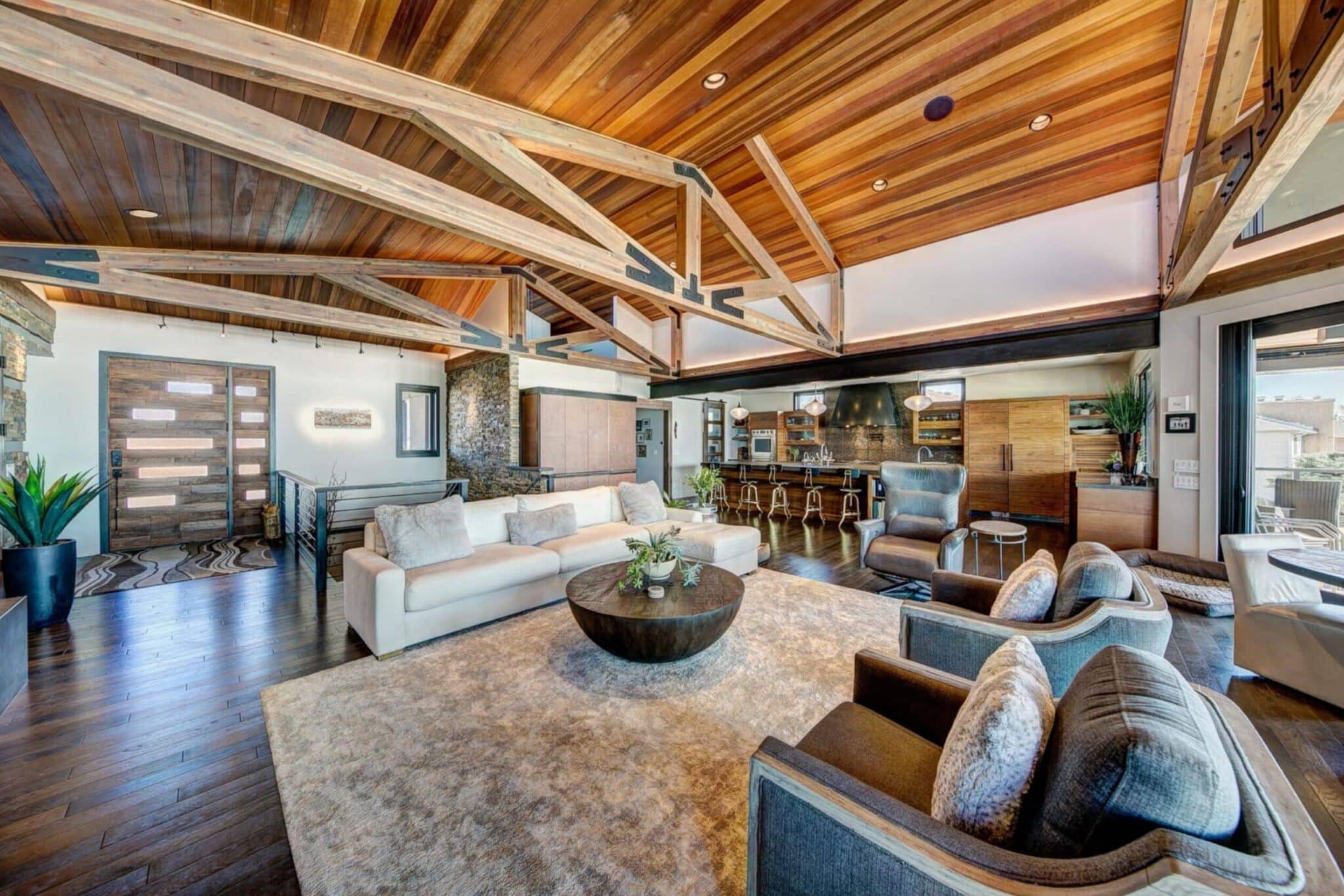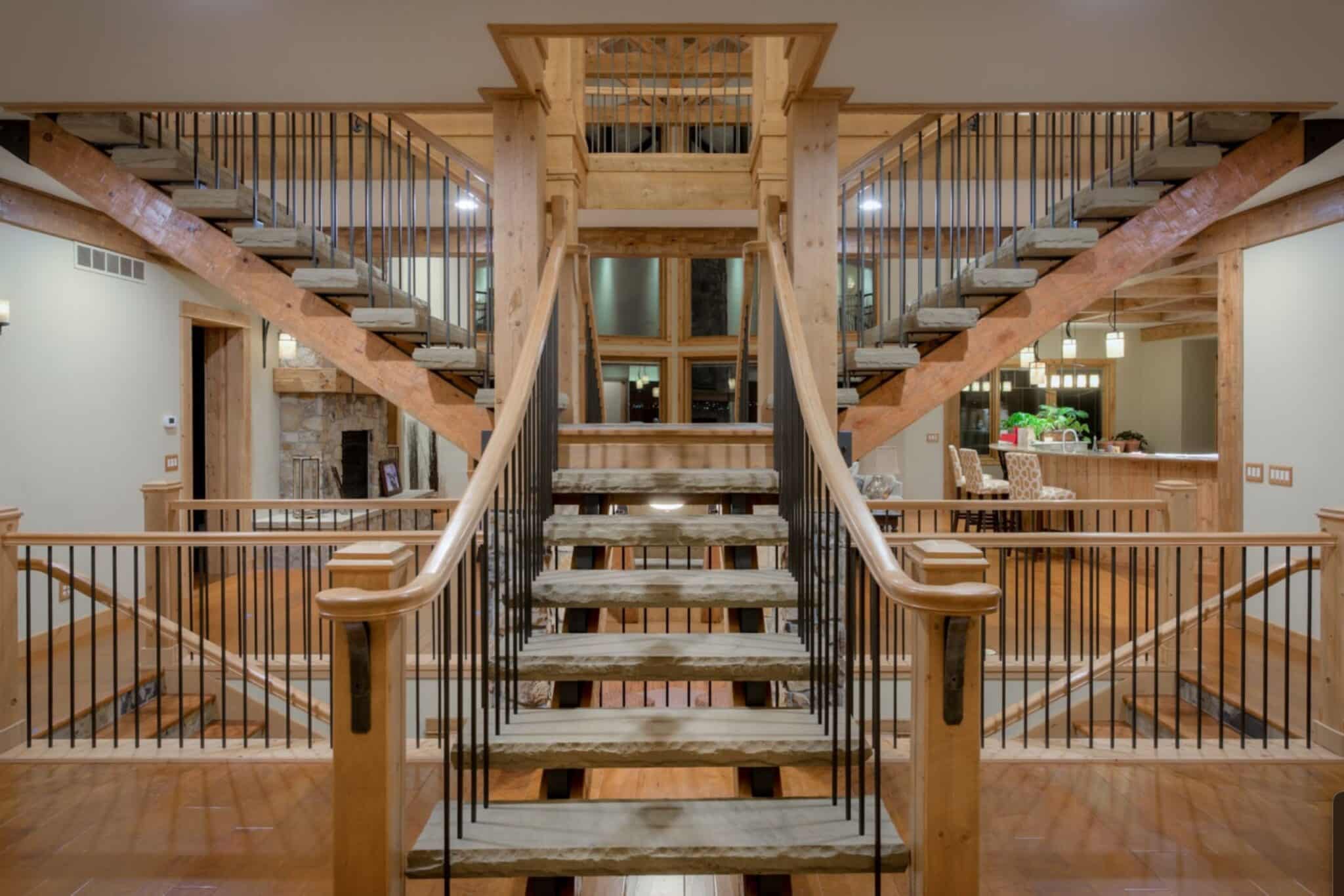Building a Custom Home: Frequently Asked Questions

Building a custom home is like creating a personalized masterpiece, tailored just for you. Whether you’re dreaming of a sleek modern retreat or a cozy country cottage, the process can be both exciting and overwhelming.
At Hammerskil Homes, we understand that navigating the path from vision to reality can raise countless questions. We’ve distilled our decades of custom home-building experience into this guide that will address the most common queries about building a custom home, from how to select a plot to design options and how to choose the right custom home builder.
What is the Custom Home Building Process?
Building a custom home involves several key stages, each crucial to achieving your dream living space. The process typically begins with selecting a suitable plot of land, where you’ll need to consider factors such as location, size, utility access, and zoning regulations. Once the land is secured, you’ll work closely with a builder to design your home, which includes creating detailed blueprints and selecting materials.
Next comes the construction phase, where the actual building takes place. This stage includes site preparation, foundation work, framing, and the installation of essential systems like plumbing and electrical. Throughout this period, regular inspections ensure that the construction adheres to quality standards and building codes.
Finally, after construction is complete, there’s a phase known as “finishing touches,” which involves interior design, landscaping, and final inspections. This stage ensures that your custom home not only meets your expectations but also adheres to local regulations. Understanding each of these phases helps manage expectations and ensures a smooth transition from concept to reality.
How Do You Choose the Right Location for a Custom Home?
Selecting the right location is perhaps the most important step in the custom home building process as it cannot be undone, and the downsides of a certain locale may not always be obvious. The wrong location can come back to bite you later in the form of foundation damage, flooding, hidden pollution, or construction or other obnoxious activity nearby. So, start by considering proximity to work, schools, and amenities to ensure convenience for your daily routines. A location that balances accessibility with a tranquil environment often leads to a more satisfying lifestyle.
If you’re looking at a site in an existing neighborhood, evaluate the neighborhood’s safety, local community vibe, and future development plans. It’s important to choose a place where you feel comfortable and connected. Additionally, consider the land’s topography, soil conditions, relative risks for flooding and wildfires, and how all of those factors might affect your home’s design, drainage, and landscaping needs.
Don’t forget to research zoning laws and building regulations in the area, as these can influence your home’s design and functionality. Working with a knowledgeable builder can help you get the right information and provide valuable insights so you can make an informed decision. By carefully selecting the right location, you’ll lay a solid foundation for your custom home and your future happiness.
What Factors Need to Be Considered When Building a Custom Home?

Building a custom home involves several key considerations that can significantly impact the outcome of your project. First and foremost, budget planning is essential. Ensure that you account for all costs, including land acquisition, construction, permits, and potential unexpected expenses. Working with an experienced custom builder can help you create a realistic budget and stick to it.
Next, think about your lifestyle and how your home will accommodate any kind of future needs. Consider the number of bedrooms and bathrooms, layout preferences, and any special features you desire, such as a home office, gym, or entertainment space. Those spaces often require special construction techniques for additional functionality, so you’ll always want to plan for them well in advance. Your final design should reflect both your current lifestyle and any future needs.
Additionally, think about energy efficiency and sustainability. Incorporating green building practices and energy-efficient systems can reduce long-term costs and minimize environmental impact. Finally, don’t overlook the importance of quality materials and finishes, as these will influence both the functionality and aesthetic appeal of your home.
Choosing the right partner to help you nail all of these decisions is, well, yet another important decision. Look for a builder with a proven track record, excellent references, and a style that aligns with your vision. Clear communication and a solid contract are key to ensuring that your expectations are met.
By addressing these considerations early on, you’ll be better equipped to make informed decisions and achieve your ideal custom home.
How Do You Choose the Right Builder for Your Custom Home?
Selecting the right builder is perhaps one of the most critical decisions in the custom home-building process. Start by researching potential builders in your area and looking at their past projects. An established builder with a strong portfolio can offer insights into their work quality and style.
Check for credentials and licenses. Ensure that the builder is licensed and insured, which is crucial for protecting yourself against potential issues. Membership in professional organizations can also indicate a commitment to industry standards and ongoing education.
Seek out customer reviews and testimonials. Feedback from previous clients can provide valuable information about a builder’s reliability, communication skills, and overall ability to deliver a home that will be to your satisfaction. Don’t hesitate to ask for references and follow up with past clients to get firsthand insights.
It’s also wise to evaluate a builder’s communication skills and approach to project management. A good builder should be transparent, responsive, and willing to listen to your ideas and concerns. Clear communication from the start can prevent misunderstandings and ensure that your vision is accurately translated into reality.
Don’t forget to discuss the contract in detail before making a commitment. Ensure that the contract includes all aspects of the project, from the scope of work and materials to timelines and payment schedules. A well-drafted contract protects both parties, allows for unforeseen circumstances or obstacles, and helps ensure a smooth building process.
What Should You Expect During the Construction Process?
The construction phase is where your custom home truly begins to take shape, and knowing what to expect can make the process smoother and less stressful. Here’s a breakdown of what typically happens during this crucial stage:
Initial Site Preparation and Foundation Work: The process starts with site preparation, which involves clearing the land and laying the foundation. This stage sets the groundwork for your home, ensuring it’s stable and able to accommodate all of your current and future design plans.
Framing and Structural Work: Once the foundation is complete, the framing begins. This involves constructing the skeletal structure of your home, including walls, floors, and roof supports. At this point, the basic layout of your home becomes visible, and you can see how the different rooms and spaces will be arranged.
Installation of Systems and Insulation: After the framing is up, your builder will install essential systems such as electrical wiring, plumbing, and HVAC. Insulation will also be added for energy efficiency and comfort. This phase often includes inspections to ensure everything meets building codes and standards.
Interior and Exterior Finishes: With the systems in place, the focus shifts to both interior and exterior finishes. This includes installing drywall, flooring, cabinetry, and countertops, as well as exterior siding, roofing, and landscaping. You’ll start to see your personal touches come to life as these design elements are added.
Final Inspections and Walkthroughs: Before you can move in, final inspections are conducted to ensure that all aspects of the home meet safety and quality standards. You’ll have the opportunity to do a walkthrough with your builder to address any last-minute issues or adjustments.
Completion and Handover: Once everything is completed to your satisfaction, you’ll receive the keys to your new home. Your builder will provide any necessary documentation, including warranties and maintenance instructions, to help you get settled in.
Build with the Best
Creating your own custom home is an exciting journey filled with important decisions and milestones. By understanding the key phases, from choosing the right location to working closely with your builder, you can navigate the process with confidence. Remember, a successful custom home experience relies on clear communication and professional expertise. Partnering with a knowledgeable builder like Hammerskil Homes ensures that your vision transforms into a well-crafted reality.
Contact us today to get started on your dream home or to learn more about why our customers love working with us!